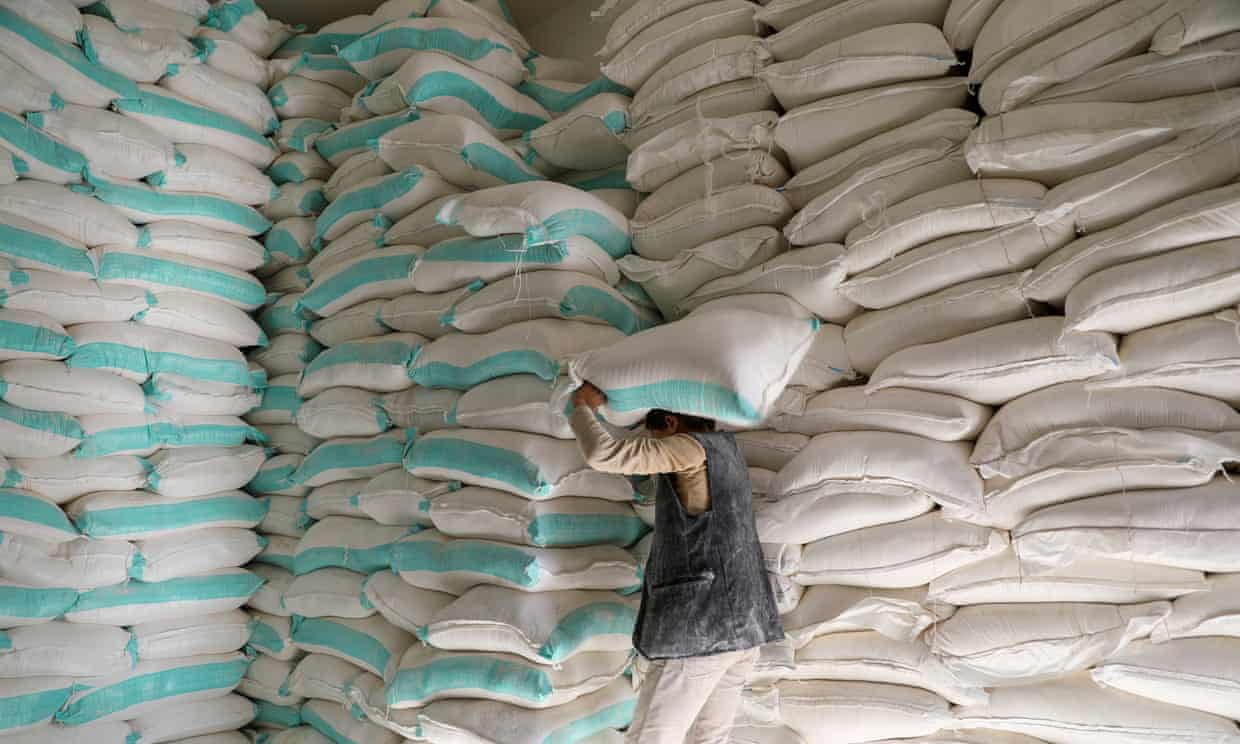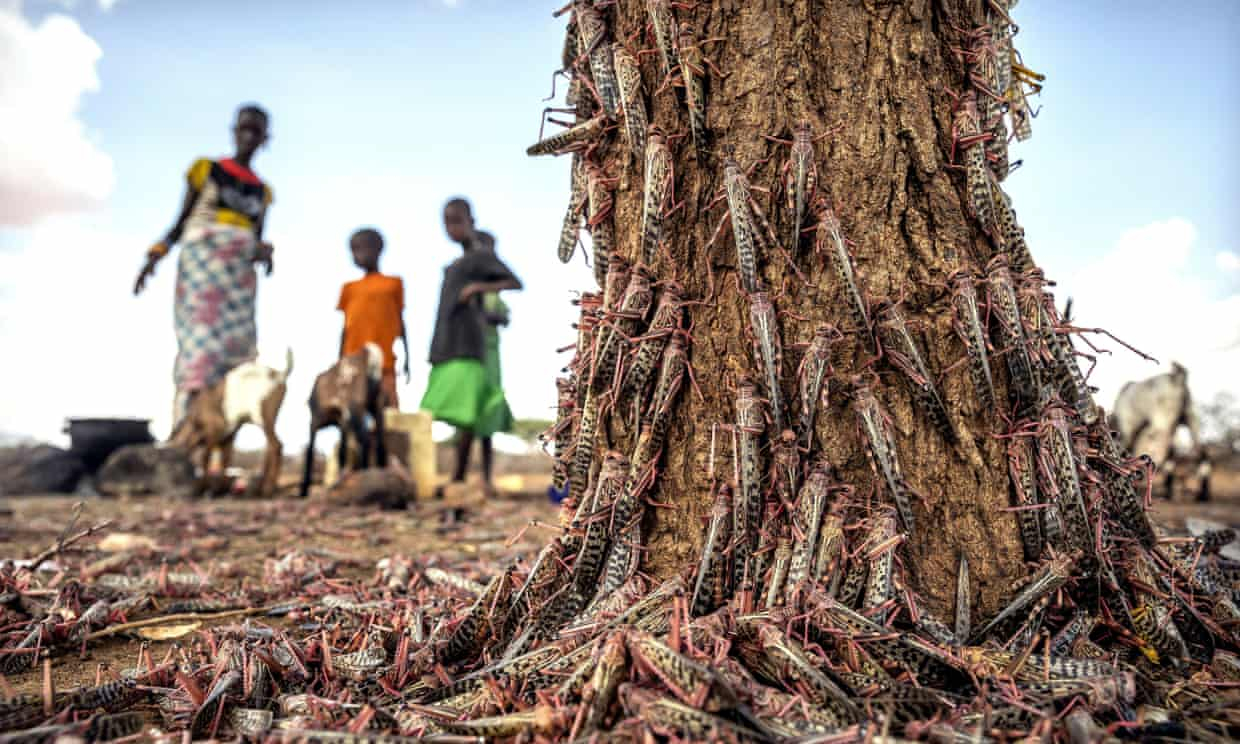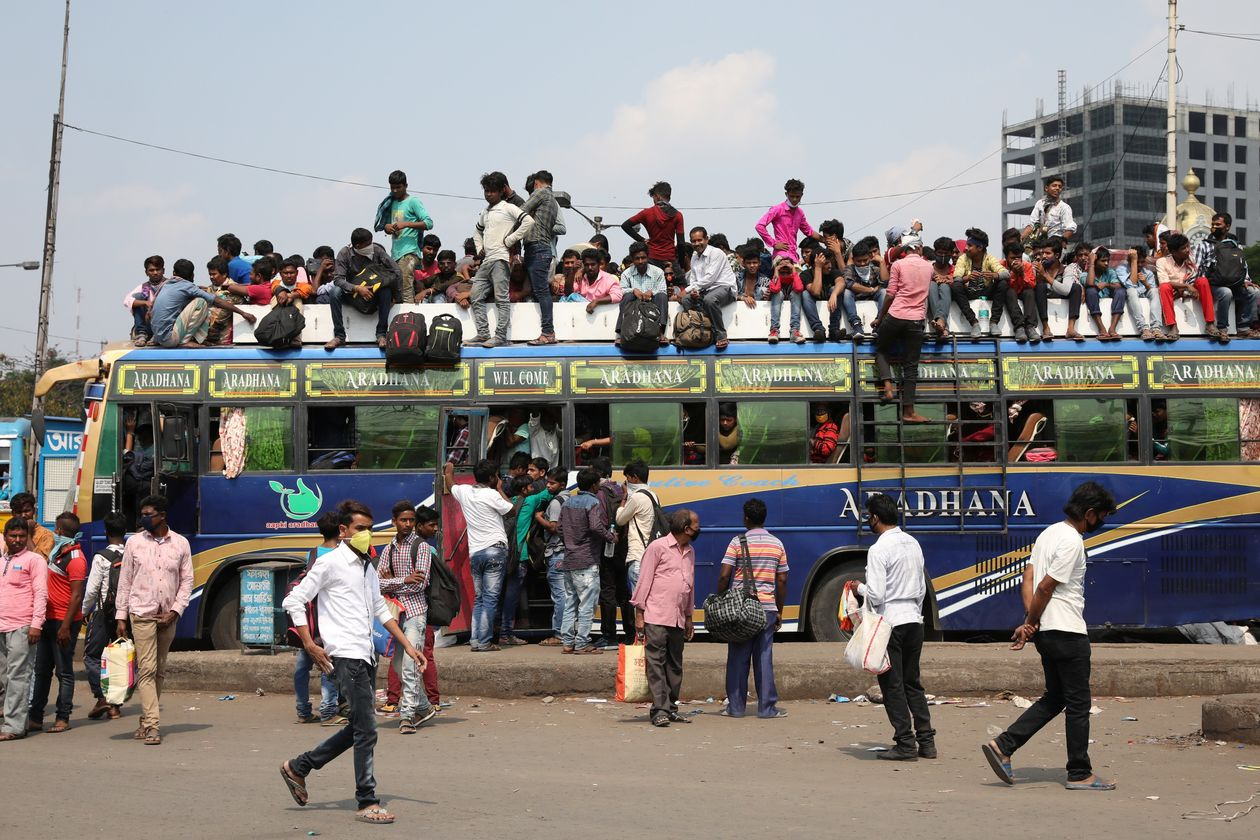Editor's note: This is the 44th article in the COVID-19 Global Roundup series. Here is the previous one.

Sacks of wheat flour at a World Food Programme distribution center in Sanaa, Yemen. /Reuters
Sacks of wheat flour at a World Food Programme distribution center in Sanaa, Yemen. /Reuters
Conflicts and global economic recession have already decimated their homelands and jobs, but the COVID-19 might to push people in poor countries over the edge. They are now facing more grievous risks caused by the COVID-19-triggered lockdown: famine and unrest.
The head of the UN food agency warned Tuesday that as the world is dealing with the coronavirus pandemic, it is also "on the brink of a hunger pandemic" which could lead to multiple famines within a few months if immediate action isn't taken.
The World Health Organization's COVID-19 special envoy David Nabarro also warned that people in poorer nations would lose faith in authorities and the world could see ungovernability in many nations without effective action to combat the coronavirus.
But what are these effective actions? Many poor countries have imitated rich countries and imposed lockdowns, but the results in both types of countries have not been the same, and the unintended consequences are proving to be deadlier.
In India, millions of laborers flee for the rural areas where they could find food at homes after hearing the news of an impending national lockdown, and they likely carried the coronavirus with them.
That's just one of the problems that can arise in developing countries. The worst is that when states have limited budgets and capacity to support their locked-down population, lockdowns can result in widespread starvation and rampant disobedience and unrest.
Even in the world's most developed county, the U.S., a series of protests are calling against lockdown measures and pressuring to reopen the economy, exposing themselves in a risk of novel coronavirus resurgence. And the white house even activated a little-known military task force to safeguard Washington in the face of attackers.

A militia group from Ohio protests against the state's extended stay-at-home order at the Capitol building in Columbus, Ohio, April 20, 2020. /Reuters
A militia group from Ohio protests against the state's extended stay-at-home order at the Capitol building in Columbus, Ohio, April 20, 2020. /Reuters
Famine
The World Food Program analysis shows that about 265 million people around the world would face acute food insecurity by the end of this year, a doubling of the 130 million estimated to suffer severe food shortages last year.
Even before the COVID-19 outbreak, the wars in Syria, Yemen, Afghanistan and conflicts in Sudan, Nigeria and Haiti, locust swarms in east Africa, frequent natural disasters and economic crises including in Lebanon, Congo and Ethiopia have led to millions facing starvation.
World Food Program Executive Director David Beasley said that the WFP is providing food to nearly 100 million people on any given day, including about 30 million people who literally depend on WFP to stay alive. If those 30 million people can't be reached, there could be 300,000 people starve to death every single day over a three-month period and that doesn't include increased starvation due to the coronavirus.
The pandemic-triggered lockdown in numerous countries are hampering people from planting and harvesting crops, working as day laborers and selling products, which means less income for desperately hungry people to buy food and less food available, at higher prices.
Making matters worse, the import barriers and export restrictions are exacerbating the food crisis in some poor countries, although staple grain supplies are plentiful globally. Major food importers are striving to beef up their own reserves by upping purchases from abroad and some producing countries have indicated they would limit their sales abroad to prioritize domestic supply.
"In a worst-case scenario, we could be looking at famine in about three dozen countries, and in fact, in 10 of these countries we already have more than one million people per country who are on the verge of starvation," Beasley said.

Desert locusts swarm over a tree in Isiolo county, Kenya, in an outbreak threatening crops across parts of Africa. /AP
Desert locusts swarm over a tree in Isiolo county, Kenya, in an outbreak threatening crops across parts of Africa. /AP
Unrest
Lockdown efforts to halt the disease have shut down large swaths of the global economy, with developing countries likely to be hardest hit. And widespread defiance of those lockdowns is increasing.
Many people in developing countries work in an informal economy and needs to work every day to put food on the table. Citizens don't have the luxury of obeying the stay-at-home and social-distancing regulations, so they will risk to go out and feed their family, disobeying government orders out of desperation. While, governments have frequently responded with escalating police violence to try to make people stay home.
Reports say police beat people for defying a stay-at-home order and shot to death a 13-year-old boy who was standing on his balcony in Kenya. At least 18 people have been killed by security forces enforcing the lockdown in Nigeria.
Researchers in India report that they've already documented hundreds of deaths caused by the lockdown, including people who died of starvation and migrants fleeing the cities for rural areas who collapsed of exhaustion or were run over on the roads.
Director of IMF's fiscal affairs department Vitor Gaspar told reporters that while mass protests are unlikely with strict lockdowns in place, unrest could spike when the crisis appeared to be under control. To avert further unrest, Gaspar emphasized that policymakers must provide support to households and firms that are made vulnerable by the crisis.
However, even rich countries with more state capacity, more resources, and more money to support their locked-down populations with an expanded welfare have struggled, how poor countries can handle the crisis better? But a sure thing is that if the government in poor countries do nothing to help, famine and the following unrest could produce even more social crisis on top of a health crisis.

Bus riders in Kolkata, India, are seen before the start of a lockdown to limit the spread of coronavirus, March 23, 2020. /Reuters
Bus riders in Kolkata, India, are seen before the start of a lockdown to limit the spread of coronavirus, March 23, 2020. /Reuters
Dominique Burgeon, director of emergencies at the UN Food and Agriculture Organization (FAO), told reporters that there were already armed militia and guerrilla groups in some of the vulnerable areas in Africa. If the coronavirus takes hold, people will be unable to work and tend to crops, and resources will be stretched further, which will fuel greater instability in the region.
In India's commercial capital of Mumbai, thousands of jobless migrant workers protested on Tuesday at a railway station, demanding to be allowed to return to their homes in the countryside, after Prime Minister Narendra Modi extended a lockdown of the population of 1.3 billion.
To avoid future protests, the UN, IMF, and WFP call for the international community to play a supportive role for poorer countries through concessional financing, debt relief, and funding.
However, there are signs that international cooperation on the pandemic is under strain. Though the WFP has requested 350 million U.S. dollars for its initial COVID-19 response, so far only about 80 million has been forthcoming. And the U.S. president has halted its funding for the WHO.
(With input from agencies)